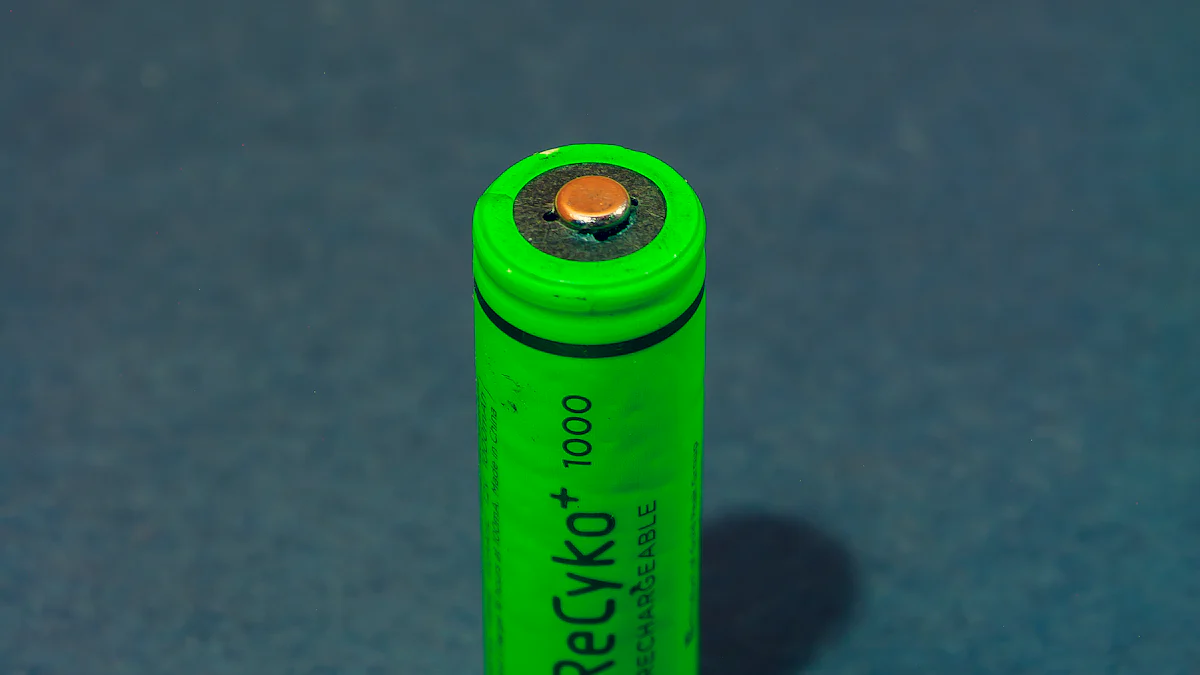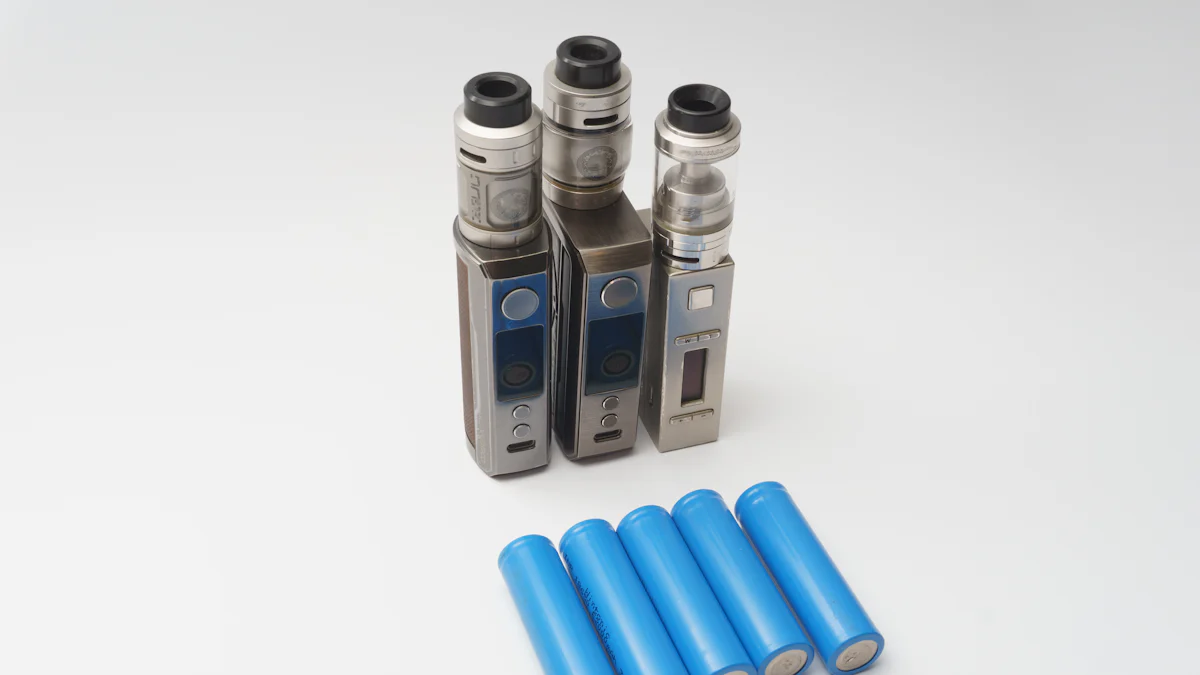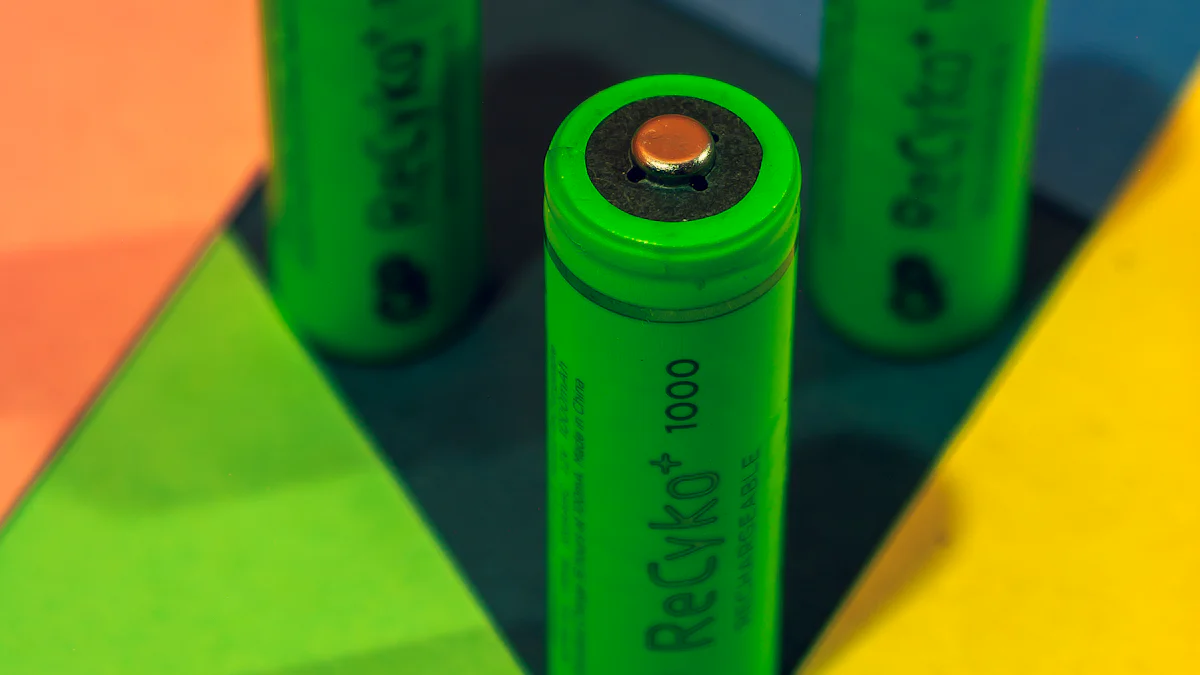battery rechargeable 18650

The battery rechargeable 18650 is a lithium-ion power source with high energy density and a long lifespan. It powers devices like laptops, flashlights, and electric vehicles. Its versatility extends to cordless tools and vaping devices. Understanding its features ensures safety and optimal performance. For instance, knowing the capacity of 18650 1800mAh Rechargeable 3.7V Environment Lithium Ion Battery Cells helps match them with the right devices.
These batteries are integral to industries requiring reliable and long-lasting energy solutions.
| Feature | Importance |
|---|---|
| High Energy Density | Essential for applications requiring long-lasting power, such as electric vehicles and e-bikes. |
| Versatility | Suitable for a wide range of applications, including consumer electronics and renewable energy systems. |
| Safety Features | Critical for ensuring user safety and battery longevity in various applications. |
Key Takeaways
- The 18650 battery is known for its high energy density, making it ideal for powering devices like laptops, flashlights, and electric vehicles, ensuring long-lasting performance.
- Safety is paramount when using 18650 batteries; always use compatible chargers, avoid overcharging, and store them properly to extend their lifespan and prevent hazards.
- Choosing the right 18650 battery involves considering capacity, voltage, and compatibility with your devices, ensuring optimal performance and reliability.
What is a Battery Rechargeable 18650?
Dimensions and structure
When I think about the battery rechargeable 18650, its size and design stand out. The name “18650″ actually refers to its dimensions. These batteries have a standard diameter of 18 mm and a length of 65 mm. Their cylindrical shape is not just for looks; it helps with energy density and heat dissipation. Inside, the positive electrode is made of lithium-ion compounds, while the negative electrode uses graphite. This combination ensures efficient energy storage and discharge.
The structure also includes internal components like electrodes and electrolytes, which play a big role in performance. For example, they affect how quickly the battery discharges and how much resistance it has. Over time, aging mechanisms like capacity fade can occur, but the robust design of 18650 batteries helps them last longer.
Chemistry and functionality
The chemistry of a battery rechargeable 18650 determines how it performs. These batteries use different chemical compositions, each suited for specific needs. For instance:
| Chemical Composition | Key Characteristics |
|---|---|
| Lithium Cobalt Oxide (LiCoO2) | High energy density, ideal for laptops and smartphones. |
| Lithium Manganese Oxide (LiMn2O4) | Balanced power output, great for power tools and electric vehicles. |
| Lithium Nickel Manganese Cobalt Oxide (NMC) | Stable and reliable, used in medical devices and EVs. |
| Lithium Iron Phosphate (LiFePO4) | Extremely safe and thermally stable, perfect for solar systems and critical uses. |
These chemical compositions allow the 18650 battery to deliver consistent power, making it a favorite for many applications.
Common applications and devices
The versatility of the battery rechargeable 18650 amazes me. It powers a wide range of devices, including:
- Laptops
- Flashlights
- Electric vehicles
- Cordless power tools
- Vaping devices
- Solar-powered systems
In electric vehicles, these batteries provide the energy density needed for long drives. For laptops and flashlights, they ensure portability and extended usage. Even solar-powered devices and power walls rely on 18650 batteries for consistent energy storage. Their rechargeability and durability make them a go-to choice for both everyday gadgets and industrial tools.
The battery rechargeable 18650 is truly a powerhouse, combining compact design, advanced chemistry, and wide-ranging applications.
Features and Benefits of Battery Rechargeable 18650

High energy density and capacity
I find the high energy density of the battery rechargeable 18650 remarkable. It allows these batteries to store more power in a compact size, making them ideal for portable devices. To understand how they compare to other battery types, take a look at this table:
| Battery Type | Energy Density Comparison |
|---|---|
| 18650 Li-ion | High energy density, ideal for portable devices |
| LiFePO4 | Lower energy density compared to 18650 |
| LiPo | High energy density, similar to 18650 |
| NiMH | Higher energy density than NiCd |
The high capacity of these batteries offers several benefits:
- Increased energy storage in the same form factor.
- Enhanced safety features with advanced thermal management.
- Longer cycle life due to optimized charging algorithms.
- Sustainability through cobalt-free designs and recycling initiatives.
- Fast charging capabilities for convenience.
These features make the 18650 battery a top choice for high-demand sectors like electric vehicles and portable electronics.
Rechargeability and cost-effectiveness
Rechargeability is one of the most practical features of the battery rechargeable 18650. It reduces the need for frequent replacements, saving money over time. Here’s how it contributes to cost-effectiveness:
| Aspect | Explanation |
|---|---|
| Rechargeability | Reduces the need for frequent replacements, lowering overall costs. |
| Environmental Impact | More eco-friendly than non-rechargeable options, enhancing overall value. |
By reusing the same battery multiple times, I can reduce waste and contribute to a greener planet. This makes the 18650 battery not only economical but also environmentally friendly.
Longevity and durability
The durability of the battery rechargeable 18650 impresses me. Proper charging practices, temperature management, and quality materials all contribute to its long lifespan. These batteries perform well even under extreme conditions. For example, Sunpower 18650 batteries are designed for low temperatures, ensuring reliable power for communication equipment in cold environments. They retain their capacity even after 300 cycles, minimizing the need for frequent replacements.
Other factors like discharge rates and internal resistance also enhance their longevity. With these features, I can rely on 18650 batteries for consistent performance over time.
The combination of high energy density, rechargeability, and durability makes the battery rechargeable 18650 a reliable and cost-effective power source for various applications.
Safety Tips for Using Battery Rechargeable 18650

Proper charging and discharging practices
I always prioritize safe charging and discharging practices when using a battery rechargeable 18650. These batteries require precise voltage and current control to maintain their performance and safety. I use chargers specifically designed for 18650 batteries to avoid overcharging or undercharging. For instance, I charge them at 4.2V with a current of around 1A, which ensures optimal performance.
To protect the battery’s health, I avoid completely discharging it. Instead, I recharge it promptly when the device indicates a low battery level. I also use the TP4056 module, which includes safeguards against over-discharge and short circuits. Periodically using the battery during storage helps maintain its condition.
Overcharging or improper charging can lead to thermal runaway, causing elevated temperatures or even leakage. I always remove the battery from the charger immediately after it’s fully charged to prevent such risks.
Avoiding overcharging and overheating
Overcharging and overheating are two major risks I avoid when using 18650 batteries. I never leave batteries unattended while charging. I also inspect them periodically during charging to ensure they don’t overheat. Using chargers with built-in safety features, like temperature monitoring, helps me prevent damage.
I store batteries in a cool, dry place away from direct sunlight and heat sources. Extreme temperatures can degrade their performance or even cause them to fail. I also avoid using damaged batteries, as they can lead to short circuits or other failures.
- I always use a compatible charger designed for 18650 batteries.
- I remove the battery immediately after it’s fully charged.
- I avoid charging or using batteries in extreme temperatures.
Safe storage and handling
Proper storage and handling are essential for ensuring the safety of 18650 batteries. I store them in snug containers to prevent movement and keep them away from metal objects to avoid short circuits. Protective sleeves are a great way to safeguard individual batteries.
I handle batteries gently to avoid physical damage. For example, I check for dents or leaks before use. Damaged batteries can compromise safety and performance. I also label my battery storage containers with handling instructions to ensure proper care.
To maintain their performance, I store batteries between 68°F and 77°F in a well-ventilated area. I keep them away from dust, debris, and magnetic fields. These precautions help me extend the lifespan of my batteries while ensuring safety.
By following these safety tips, I can use my battery rechargeable 18650 confidently and effectively.
Choosing the Right Battery Rechargeable 18650
Capacity and voltage considerations
When choosing a battery rechargeable 18650, I always start by evaluating its capacity and voltage. The capacity, measured in milliampere-hours (mAh), tells me how much energy the battery can store and deliver. Higher mAh ratings mean longer usage times, which is perfect for devices like flashlights or laptops. I often use a battery tester or a charger with a capacity testing function to measure this accurately.
Voltage is equally important. Most 18650 batteries have a nominal voltage of 3.6 or 3.7 volts, but their operating range spans from 4.2 volts when fully charged to about 2.5 volts at the discharge cut-off. I ensure the battery voltage matches my device’s requirements to avoid performance issues or damage. For example, using a battery with a higher voltage than recommended can harm the device.
Compatibility with devices
Ensuring compatibility with devices is crucial when selecting an 18650 battery. I always check two main factors: physical fit and electrical compatibility.
| Factor | Description |
|---|---|
| Physical Fit | Confirm the battery size fits your device. |
| Electrical Compatibility | Ensure the voltage and current specifications match your device’s requirements. |
I also verify that the battery’s discharge rate aligns with the power demands of my device. For instance, high-drain devices like power tools require batteries with higher discharge rates.
Trusted brands and quality assurance
I trust only reputable brands when buying 18650 batteries. Brands like LG Chem, Molicel, Samsung, Sony|Murata, and Panasonic|Sanyo have a long-standing reputation for quality and reliability. These manufacturers invest in rigorous testing and quality control, ensuring their batteries perform consistently.
When evaluating quality, I look for certifications like UL, CE, and RoHS. These indicate compliance with safety standards. I also prioritize batteries with durable casings and reliable internal structures. While cheaper options may seem tempting, I avoid them because they often lack the safety and longevity of trusted brands.
Choosing the right battery rechargeable 18650 ensures optimal performance, safety, and durability for my devices.
The 18650 battery stands out with its high energy density, stable voltage, and long lifespan. Choosing the right battery ensures optimal performance and safety. I always prioritize trusted brands and match capacity with device needs. For safe use, I store batteries properly, avoid physical damage, and use compatible chargers. These steps maximize efficiency and longevity.
FAQ
What makes the 18650 battery different from other lithium-ion batteries?
The 18650 battery stands out due to its cylindrical shape, high energy density, and long lifespan. It works well in high-drain devices like laptops and power tools.
Can I use any charger for my 18650 battery?
No, I always use a charger designed for 18650 batteries. It ensures proper voltage and current control, preventing overcharging and overheating.
How do I know if my 18650 battery is safe to use?
I check for physical damage like dents or leaks. I also ensure the battery charges and discharges properly without overheating or losing capacity quickly.
Post time: Jan-06-2025




